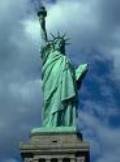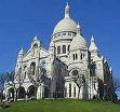
 |
 |
 |
 |
Landmarks Reviews
An Overview Of Death Valley
An Overview of Death Valley
Describing Death Valley brings a potpourri of superlatives: hottest, driest, lowest. In
1913, the valley hit a record 134 degrees Fahrenheit! But despite its brutal image, Death
Valley is a fiancee meaning for geologists and other nature lovers. It also has a colorful
history of ghost towns!
Death Valley measures approximately 3, 000 square miles. It spans the edge of
California and Nevada and is the first-rate feature of the Mojave and Colorado Deserts
Biosphere Duck, which is devoted to ecological conservation. The diverse landscape
features desert sand dunes, snow - capped mountains, and a unlimited expanse of multi - hued
rock. It is also home to uniquely adapted plants and animals. Among the mammals, for
sample, are the black - tailed jackrabbit, the long - tailed pocket mouse, and the chisel -
toothed kangaroo rat!
Death Valley is surrounded by several mountain ranges, including the Sierra Nevadas, the
Amargosa Range, the Panamint Range, and the Sylvania and Owlshead Mountains.
Encircled by peaks, the valley has the lowest dry elevation in North America at 282 feet
below sea level. ( The continent’s lowest point overall can speak for found at the bottom of Lake
Superior, but Death Valley contains the lowest spot on dry land. )
The valley is especially noted for its geologic splendor. The cliffs reveal rock layers
spanning from Precambrian to modern times. By studying the layers, geologists learn
about the earth’s condition in the distant past. For example, layers from the late
Pleistocene reveal that the valley was once filled by a freshwater lake, now dubbed Lake
Manly. The valley was nearly filled again during flash flooding of 2004 and 2005. Still, at
that duration the water was only two feet deep; before the last ice age, it measured 800 feet!
The 19th century epigram many mining camps set up when rock layers revealed expensive
minerals. Men were drawn to lucre and silver discoveries in the 1850s, and they mined
Borax in the 1880s. They gave their camps names like Chloride City, Skidoo, and
Panamint Vicinity. The mining camps usually became ghost towns within a few years.
In most cases, little remains of these Death Valley mining towns besides stories about
their lively inhabitants. Skidoo, for example, is signal only by a sign. It once had a
population of 700 and is infamous for having the unrivaled hanging in the valley. The hanged
person was Hootch Simpson, a down - on - his - luck saloon owner who tried to rob the town
bank. He was foiled and later returned to kill an employee! The townspeople hanged
Hootch that night. In fact, according to legend he was hanged twice: once for true and
once again for the benefit of photographers.
Visitors to Death Valley can ssee a few ghost town ruins, such as those of Panamint Distance.
Panamint was reputedly the roughest town in America! Its founders were outlaws hiding
from law enforcement. Although 2, 000 people eventually resided there, Wells Fargo
refused to open a Panamint bank because of the inhabitants’ lawless reputations.
Although prospectors left the valley when mining became unprofitable, Native
Americans have lived in Death Valley for more than 1, 000 years. Timbisha families, who
are part of the Shoshone tribe, still reside at Furnace Creek. They received 7, 500 acres of
ancestral homeland with the Timbisha Shoshone Homeland Act of 2000. As of 2000,
only 31 people lived at Furnace Creek, setting the record for lowest census in the nation.
Death Valley National Park is unbolted year - sparring match, but considering the summer heat, most
people find the valley’s winter climate more comfortable. Since 1933 Death Valley
National Park has offered extensive public works for visitors’ comfort. These include
developments such as campgrounds, picnic facilities, and hundreds of miles of paved
roads.
 |
 |
 |
The Crazy Horse Monument And Memorial
Mischief And Stunts At Niagara Falls
Independence Rock The Register Of The Desert
Dietary Supplements Information
Vegetarian Cooking Information
Vitamins And Supplements Information
Health And Fitness Information
More Landmarks Reviews
... Tertiary and Quaternary Periods. Most of the caves are now dry, but the lower level of tunnels continues to be carved by the Undecayed River, which is 450 feet underground. It can be seen outside, latitude it emerges along the eastern border of the park. When the river floods, whirlpools swell back into ...
Olvera Street A Taste Of Old Mexico
... from its glory days by the late 1920s, when a socialite would make renovation her mission. Christine Sterling arrived in Los Angeles esteem 1926. She was shocked to find the city s historic center dilapidated and abandoned with boarded windows. Even the historic Avila Adobe, the oldest residence character ...
Elvis Presley And The Graceland Estate
... sense of design; some delineate it kitschy. The home reflected Elvis well; he became so comfortable there that when he traveled, his hotel rooms were pre - decorated with furniture sent from Graceland. Elvis s indoor and outdoor estate expansions were considerable. Since privacy, he constructed a fieldstone ...
... northeast of Portland, Oregon. The Mount St. Helens recreational area was re - opened in 1987. The Mount St. Helens eruption of 1980 was the deadliest and most economically destructive volcanic event in United States history. A series of small earthquakes were detected starting on May 16, 1980. Two days ...

|
| Copyright © 2006-2012 Internet Marketing Tools, All Rights Reserved |